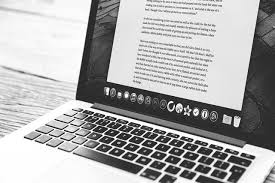A book’s appendix page is a portion found at the back that contains any additional or supplementary material about the subject of the book, such as references to related works, citations, and so forth. If you’re anything like me, the research phase of creating a book is half the fun. However, not all of your research will be included in the book’s main body. But it doesn’t mean there isn’t a place for this kind of thing. There is, and the appendix is it. So continue reading to learn how to write an appendix in a book.
Appendix in a Book
The Latin word “appendere,” which means “hang upon,” is where the word “appendix” originates. A book, academic paper, bid, or another proposal that includes an appendix typically does so to provide more information to the document. Usually, it consists of the information and materials the author utilized to create the written piece.
What is an appendix in writing, a question that many students ask. An academic article’s appendix, which is common in academic journals but can also be found in books, is essentially a list of all the references that were used in the study. Professors frequently demand that their students’ written assignments have an appendix. Nonfiction works employ an appendix more commonly to add credibility, research, and references. Nonfiction books that benefit from an appendix include biographies, autobiographies, memoirs, research-based books, and cultural critiques.
You can make it easier for readers to understand the information you give by including an appendix in your writing. It is significant to remember that various professors could have varied requirements for what constitutes an appendix. The appendix’s goal is to prevent ambiguous or pointless content and enhance the reader’s comprehension of the document.
Why Add an Appendix Page to Your Book?
A book’s appendix may be included for a number of different reasons.
#1. To Add to the Information on a Subject
For further information on a book topic that the author may not have had time or space to cover thoroughly, refer to the appendix. The reader can examine other materials (books, papers, research) in the appendix at their own convenience.
#2. Reference Data and Sources
If the book relied substantially on research for its writing, the author might decide to mention the sources in this section towards the end. An author can feel compelled to mention all the books and materials they used in the writing process, for instance, if they are writing about the life of Marie Curie.
#3. To Provide Unique Materials
To enhance the depth of their narrative in biographies or memoirs, authors might use original materials like letters, personal papers, photos, emails, lists, etc.
What an Appendix Is For
Ultimately, we must first respond clearly to the fundamental question, “What is the purpose of an appendix?” before we can comprehend what an appendix seeks to do and how to write an appendix example. An appendix, in other words, is essential for further elaborating on complex information that could be challenging to properly present inside the body of an essay. Its goal is to provide readers with further details on the subject the paper discusses.
An appendix may contain information that strengthens the case and may persuade the reader. Research papers and journal articles often use an appendix to reinforce a main topic.
Contents of Appendix
Each appendix should include:
#1. A Clear Title
The appendix should have a title that is succinct, and descriptive, and makes it apparent what material is contained inside. ‘Appendix A: Data Tables for Study Results’ or ‘Appendix B: Images of Experimental Setup’ are two examples of appendices.
#2. List of Contents
It can be useful for readers to have a table of contents in the appendix to help them navigate the information. For instance:
List of contents
- Study Results in Data Tables
- Pictures of the experimental setup
- Questions and Answers from the Survey
- Typical Transcripts of Interviews
#3. Page Numbers
The appendix should be a separate page, have its own unique page number, and be referred to consistently (e.g., “Appendix A,” “Appendix B,” etc.). For instance:
Chapter A, Page 1 of 5
#4. Relevant Information
Information that supports the major points of the text, such as tables of data, raw statistical data, graphics, or other documents, should be included in the appendix. For instance:
Experimental Results, Figure 1.
[Put here a graph or chart]#5. Correct Formatting
The appendix must be formatted in accordance with the guidelines of the selected citation style (for example, APA, MLA, or Chicago). For instance:
Survey Questions and Answers, Appendix B
[put survey questions and answers here, formatted in accordance with APA style]#6. Clearly Labeled Components:
Each component’s appendix label should be obvious so that readers may quickly determine how it relates to the paper. For instance:
Table 1: Survey Respondents’ Demographic Information
#7. Brief Explanation
In order for readers to comprehend the significance of each aspect in the appendix, it is crucial to give brief, in-depth summaries of each one. For instance:
Sample Interview Transcripts, Appendix C
The three participant interview transcripts will be provided for reference. These interviews shed more light on the participants’ perspectives and experiences related to the topic covered in this document.
How to Compose an Appendix in Various Styles
It’s crucial to become familiar with both of the different appendix creation approaches because a professor might specify one or the other. For both the Appendix APA format and the Appendix MLA format, our professional writers have developed standards and criteria. They have distinctive characteristics and rules that must be properly adhered to, despite some similarities.
Appendix APA
In a paper of this kind, many teachers expect students to provide an appendix. It’s wise to adhere to the following principles and regulations to write an appendix in APA format correctly:
The Rules for Appendix APA are:
- ABC follows the “Appendix” header at the beginning of the appendix.
- It should be typed above the appendix title as well.
- Abstracts Each appendix is organized in accordance with the material presented in the paper.
- Publish the reference list after the appendix.
- Each appendix should have a page number.
- No matter how large, appendices must have their own page.
- Embrace footnotes.
Writing must adhere to the general guidelines of Appendix APA. This is what instructors look for when they assign apprentices to write a paper in this format. Discover the fundamental guidelines for writing an APA-style appendix, and you’ll be on your way to success. You might find it helpful to keep a note of this information or to memorize it.
APA Guidelines:
- Every appendix should have a separate point.
- Each appendix should have a title.
- Use ABC to tilt any number of appendices.
- Include (see appendix a) after the text for references within the body.
- Centering the title is recommended.
- No matter how large, every appendix must have its own page.
- Without indents, write the first paragraph.
- The formatting for the remaining paragraphs should be as intended.
- Double space between words.
- The following sample can serve as a useful model to lead you through the process of writing any form of academic work, whether you’re trying to figure out how to write an interview paper in an APA appendix or any other kind.
Appendix Chicago Style
Writing an appendix in Chicago style resembles writing one in APA. There are a few slight variations, though. Check out these recommendations for this kind of appendix.
Chicago Style Appendix Formatting Rules
- Appendices are referred to as including more than one.
- Times New Roman is the mandatory typeface for the Chicago-style appendix.
- The recommended text size is 12 points.
- Each page’s top right corner should have the page numbers visible.
- The page numbers should be identified with “Page 1, 2, 3” as well.
- A page number on the front cover should be avoided.
- Finally, a new page should be added for the bibliography. Nothing else should be on the same page as it.
- In the bibliography, footnotes are acceptable.
MLA Format Appendix
Creating an appendix in APA format and MLA format follows substantially the same rules and regulations. The MLA appendix is positioned before the reference list, which is one of the main variances between the two, but there are other distinctions as well.
The Rules for MLA Format
- Before the list of references, there is an appendix.
- Use ABC to tilt any number of appendices.
- Each appendix follows the order of the information in the paper.
- Each appendix should have a page number.
- No matter how large, every appendix must have its own page.
- To learn how to write an appendix in MLA style, it would be helpful to refer to an example. By doing this, you’ll be more likely to understand the MLA guidelines and be able to submit an academic paper that satisfies your professor’s standards.
Guidelines for MLA
- Centering the title is required.
- Double-spacing is required for the list.
- Each citation should be placed in the left margin of the first line. Every line after that must be formatted so that it’s original. To make things simpler, you may call this a “hanging indent.”
- The list of references must be arranged alphabetically. With the initial letter of the reference’s title, you can accomplish this. However, if the author is anonymous, this is typically done. The first letter of the author’s last name may also be used if they are well-known.
- Use this sequence if you’re including the known author’s name. FIRST NAME, YEAR, and SURNAME.
- Complete articles, websites, books, and recordings must all have italicized titles.
- Reference titles that just relate to a portion of a source shouldn’t be in italics, it’s vital to remember this. This comprises poems, brief essays, tabloid articles, chunks of PDFs, and scholarly entries.
What Is an Example of an Appendix?
Appendices may include graphs, tables, maps, images, unprocessed data, computer programs, musical examples, interview questions, sample questionnaires, etc.
Is Appendix in Book Important?
In an appendix, you’ll find supplemental information that isn’t necessary for understanding the text itself but might help you develop a more thorough knowledge of the study subject. It may also contain information that would be too laborious to fit in the paper’s main body.
What Is Appendix Page?
The part at the end of a page known as an appendix is where you would include supplemental information that doesn’t belong in the main body of an academic text.
Is the Appendix at the Beginning or End of a Book?
In the event that you decide to do so, the appendix should appear after the references page at the end of your essay.
What Is the Rule of Appendix?
A table of contents listing each part’s starting page must appear at the top of the appendix. The relevant docket entries must come after the table of contents. There must be chronological order in all other elements of the document.
What Is the Correct Way to List Appendices?
References are included after the appendices. The letters “Appendix A,” “Appendix B,” “Appendix C,” and so forth serve to identify the appendices. However, just use the word “appendix” if there is just one. separate appendices for the figures and tables.
Is Appendix Taken Under the Main Word Count?
Word counts include headings, tables, citations, quotes, lists, and other text elements. The list of references, appendices, and footnote 2 do not count toward the word count unless the coursework instructions state otherwise.
Related Articles
- REFERENCE CHECK: How to Check References Properly Before Hiring
- QUESTIONS TO ASK REFERENCES: 20+ Reference Checks You Need to Know
- NONPROFIT GRANT WRITING: Training, Workshops, Certification, & All you Need
- How to Patent a Product: Idea, Process, and Invention






